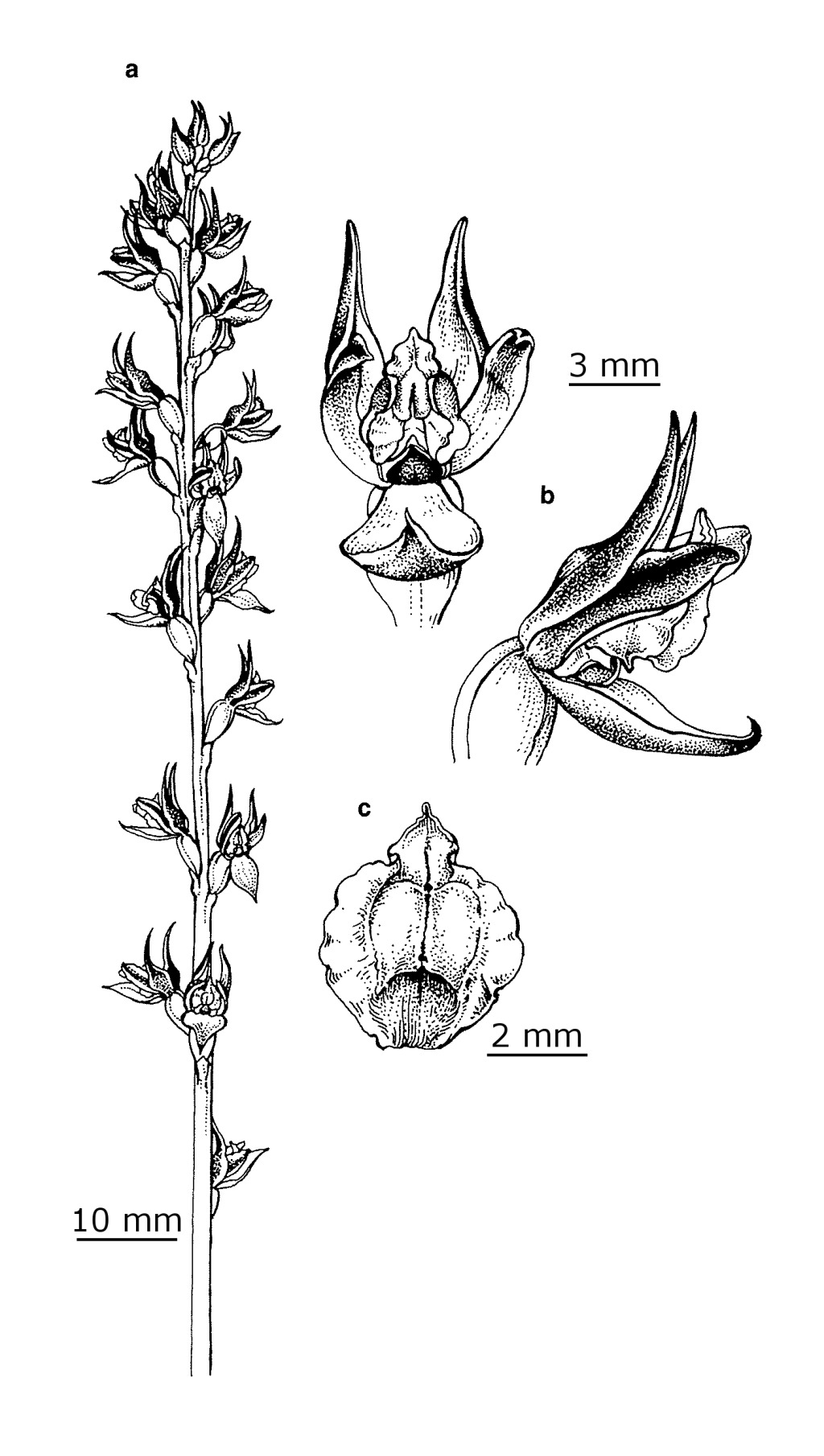Prasophyllum niphopedium
D.L.JonesFlowering stem slender, 20–35 cm tall. Leaf-blade to 30 cm long and 5 mm diam. at base, apex lax. Flowers 10–20, greenish with pink to reddish markings, lightly fragrant, in a loose spike 7–12 cm long; ovary obovoid, to 4 mm long; sepals 6–8 mm long, dorsal sepal ovate, acute, lateral sepals free or shortly united at base, linear-lanceolate, acute, almost parallel; petals linear-lanceolate, 5–7 mm long, projecting forward, apex obtuse. Labellum on a short claw, trullate, 5–6 mm long, pinkish, recurved at right angle near middle, the lower margins incurved and smooth, upper margins crenulate; callus plate brown or green, much raised at the bend, channelled below, apex blunt and short, often wrinkled. Column appendages oblong, blunt, c. 2 mm long, pale green. Flowers Dec.–Feb.
HNF, MonT, VAlp. Apparently confined to sub-alpine meadows and fertile montane woodland in the Mt Cobberas region of eastern Victoria.
Very similar to Prasophyllum frenchii, but differs in its later flowering, sub-alpine habitat, fewer and sparser flowers, the crenulate labellum and the less wrinkled callus.
The name P. rogersii has been misapplied to P. niphopedium and P. litorale in Victoria.
Bates, R.J. (1994). Prasophyllum. In: Walsh, N.G.; Entwisle, T.J., Flora of Victoria Vol. 2, Ferns and Allied Plants, Conifers and Monocotyledons, pp. 869–886. Inkata Press, Melbourne.
 Spinning
Spinning